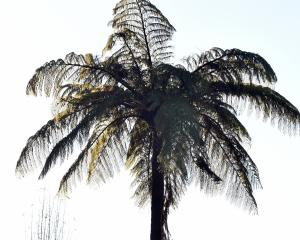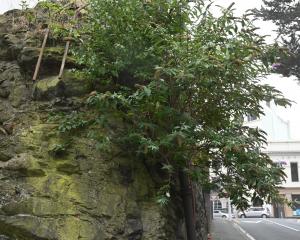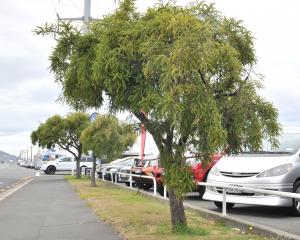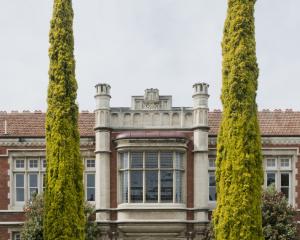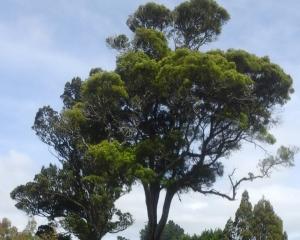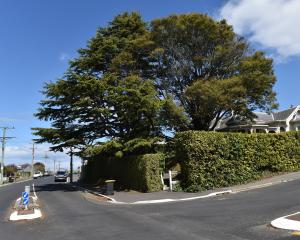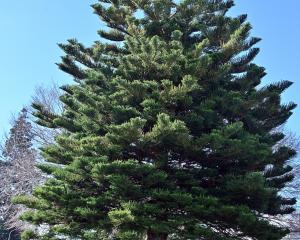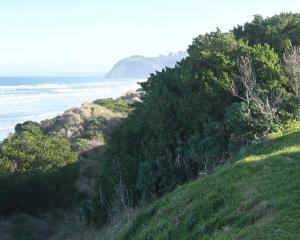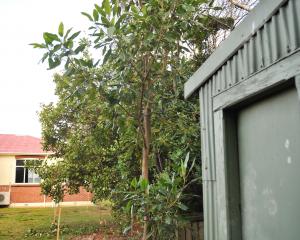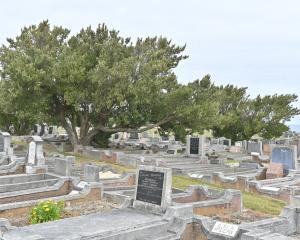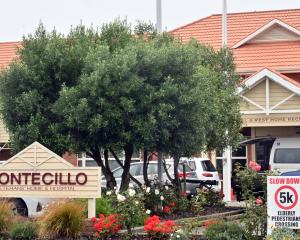
It's a hot summer day here in the South, and we're relaxing in the shade with our eyes closed, pretending we're somewhere in the balmy tropics. When we open our eyes again, is there anything around us to sustain the illusion? Any plants that come from the Earth's "waistline" between the Tropic of Cancer and the Tropic of Capricorn?
Well, in Dunedin you have your lemon trees (Citrus limon) with their ancestors from India and Southeast Asia; the occasional Peruvian pepper tree (Schinus molle), like the big spreading one in the garden of 43 Easther Cres; and a few bougainvillea vines from South America, like the magenta flowered vine on a wall at the corner of Smith St and York Pl in the central city. There are loquats, feijoas and Canary Island date palms here and there, too, but they're really sub-tropical.
How many locals know that there are some avocado (Persea americana) trees coping surprisingly well in Dunedin gardens. For instance, there's a prominent young tree outside Rainbow Seafoods at 16 Bombay St, near the Railway Station footbridge, and a smaller one by the vehicle entrance.
They're surprisingly easy to grow in Dunedin. All you need to do is press a large, round brown seed into the soil and wait a year or two. They make beautiful indoor plants too, with a pot, a "pit", and some potting mix. Frosts take their toll on exposed leaves and growing shoots, but the trees soon bounce back.
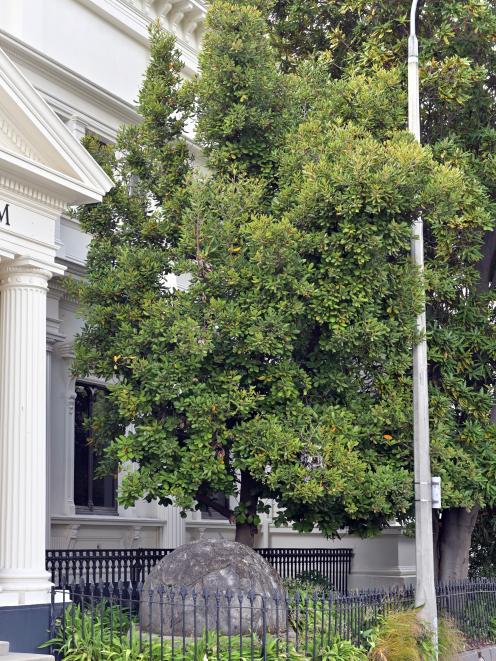
Whatever you think of certain American politicians, there's no denying how much we owe to the Americas for a lot of our favourite foods and flavours. Corn, potatoes, tomatoes, chocolate, peanuts, pumpkins, chilli peppers, capsicums, lima beans, haricot beans, vanilla, pineapples, feijoas, guavas, cashew nuts, pecans, brazil nuts, sunflowers and (... drum roll ...) avocados, were all completely unknown to our European forbears before Columbus "sailed the ocean blue in fourteen hundred and ninety two".
The original avocados probably came from an area just east of Mexico City and were tasty mouthfuls for giant ground sloths and other big plant eaters. We hungry humans hunted some of the creatures to extinction but took a liking to what they were eating. From about 5000BC farmers started growing and improving the ancestral avocado from a rather puny morsel to the big round savoury treats we can buy today.
Olmecs, Mayans, Aztecs and their neighbours apparently used avocados for edible oil much as Mediterranean people used the olive; hence the ancient quest for bigger and better fruits. Did they use the huge seeds for anything though? Well, they're edible, and Maori cooked and ate seeds from the closely-related taraire and tawa trees.
As far as the name goes, Native American Nahuatl people shortened "ahuacacuahuitl" (literally "tree of the testicles") to "ahuacatl", and Spanish settlers turned that into "aguacate" before settling on "avocado". The thick green reptilian skin of the fruit makes "alligator pear" a pretty cool name, too.
The closest thing we have to a New Zealand avocado is the Northland taraire (Beilschmiedia tarairi) from the same laurel family (Lauraceae) that includes avocado trees, bay laurel trees and tawa. The leaves of some avocado trees in Dunedin look a bit like large taraire leaves; the shape, the patterns of veins and the whitish undersurface. How do I know? There's a beautiful mature taraire tree growing beside a tall rewarewa next to the western wall of Otago Museum.
In early summer, this tree is loaded with purplish taraire "plums". The thin purplish and greenish layer of flesh around the ripe fruits is agreeable enough to have culinary potential. Who knows, with a few centuries of selective breeding, we could end up with a kind of "kiwicado" of our own.

